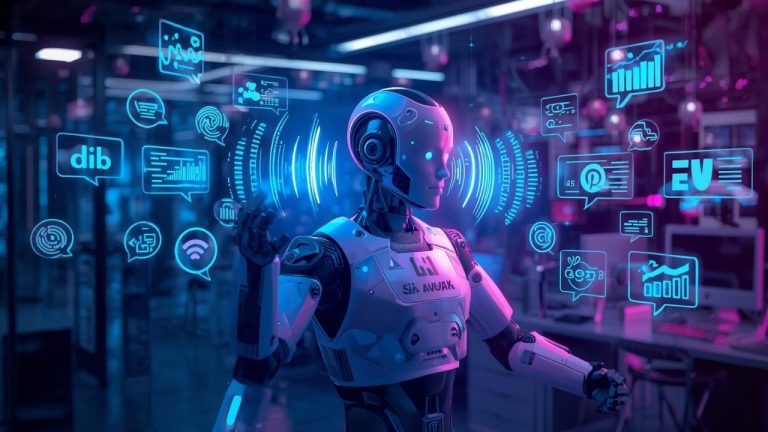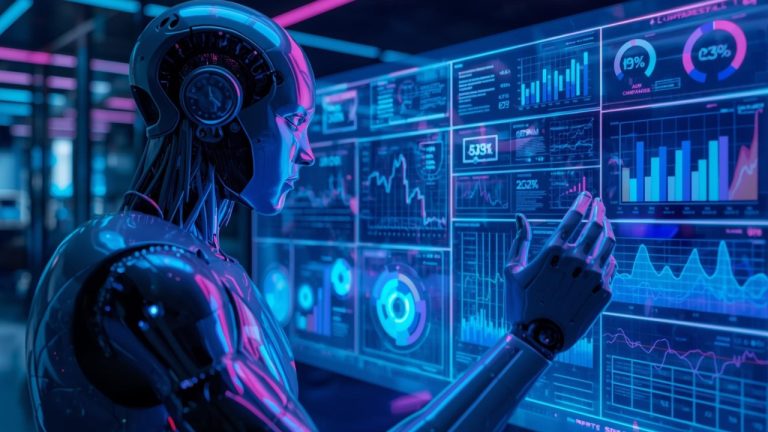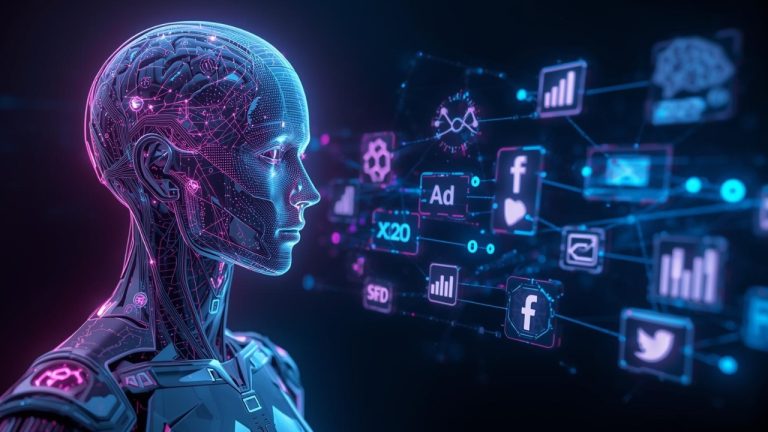
The digital marketing landscape is evolving at an unprecedented pace. Businesses are inundated with vast amounts of data, multiple marketing channels, and ever-changing consumer behaviors. In this dynamic environment, leveraging Artificial Intelligence (AI) has become essential for creating smarter, more efficient, and highly personalized marketing strategies.
An AI-powered digital marketing strategy combines data-driven insights with machine learning, predictive analytics, and automation to optimize campaigns, increase engagement, and improve ROI. This ultimate guide will walk you through how to build an AI-driven marketing strategy, step by step.
- Understand the Role of AI in Digital Marketing
Before diving in, it’s important to understand the key ways AI can enhance marketing efforts:
- Data Analysis: AI processes massive datasets to uncover patterns, trends, and insights faster than humans.
- Predictive Analytics: AI predicts customer behavior, purchase probability, and churn risk.
- Content Creation: AI generates or optimizes marketing content, including blogs, ads, and emails.
- Personalization: AI tailors messages and offers based on individual user preferences.
- Automation: AI automates repetitive tasks, such as email campaigns, ad bidding, and social posting.
Understanding AI’s capabilities ensures your strategy is built around technology that amplifies efficiency and impact rather than replaces human creativity.
- Step 1: Define Clear Marketing Goals
A successful AI-powered strategy begins with specific, measurable objectives. Identify:
- Primary Goals: Brand awareness, lead generation, sales, or customer retention.
- Key Metrics: Engagement rates, conversion rates, ROI, website traffic, or lifetime value (CLV).
- Target Audience: Segmentation by demographics, behavior, interests, or psychographics.
Defining clear goals provides a framework for AI tools to analyze data and optimize campaigns effectively.
- Step 2: Collect and Centralize Data
AI thrives on data, and building a strong data foundation is crucial:
- Website Analytics: Track user behavior, page views, and conversions.
- Social Media Metrics: Monitor engagement, shares, mentions, and follower growth.
- Email Campaign Data: Capture open rates, click-through rates, and conversions.
- Customer Relationship Management (CRM) Data: Maintain purchase history, preferences, and interactions.
- Third-Party Data: Include market trends, competitor analysis, and industry benchmarks.
Centralize this data in a single platform or data warehouse to enable AI models to process it efficiently and generate actionable insights.
- Step 3: Segment Your Audience with AI
AI allows for dynamic, precise audience segmentation, moving beyond basic demographics:
- Behavior-Based Segmentation: Identify users based on browsing history, purchase patterns, or engagement levels.
- Predictive Segmentation: Use AI to predict high-value customers, likely churners, or future buyers.
- Interest and Sentiment Analysis: Analyze social media posts, reviews, and survey responses to understand preferences and perceptions.
Effective segmentation ensures your campaigns are hyper-targeted, personalized, and more likely to convert.
- Step 4: Integrate AI Tools Across Channels
A successful AI-powered strategy requires integration across all marketing channels:
- Email Marketing Automation: Tools like HubSpot or Mailchimp can predict the best times to send emails and optimize subject lines.
- Social Media Management: AI tools suggest trending content, optimize posting schedules, and analyze engagement.
- Paid Advertising: Platforms like Google Ads and Facebook Ads use AI for automated bidding, audience targeting, and performance predictions.
- Content Marketing: AI writing assistants generate blog drafts, ad copy, and personalized recommendations.
Integration ensures that AI insights and automation work cohesively, improving overall marketing performance.
- Step 5: Use AI for Predictive Analytics
Predictive analytics is a game-changer for anticipating customer behavior and planning campaigns:
- Forecast Conversions: Predict which users are most likely to buy.
- Estimate Lifetime Value: Identify high-value customers for targeted retention campaigns.
- Churn Prediction: Detect at-risk customers and take proactive measures.
- Optimize Budget Allocation: Forecast the impact of spending across different channels.
Predictive analytics allows marketers to plan proactively rather than reactively, improving efficiency and ROI.
- Step 6: Automate Marketing Processes
AI excels at automating repetitive or data-intensive tasks:
- Email Campaigns: Trigger automated messages based on user behavior or lifecycle stage.
- Ad Bidding: Automatically adjust bids to maximize ROI or conversions.
- Content Scheduling: Schedule posts for optimal engagement based on AI recommendations.
- Chatbots and Customer Service: AI-powered chatbots handle inquiries, provide product recommendations, and collect user data.
Automation frees your team to focus on creative strategy and high-level decision-making while AI handles operational efficiency.
- Step 7: Optimize Content with AI
Content is the backbone of digital marketing. AI can enhance content strategy and execution:
- Content Ideation: Generate blog topics, social media ideas, and campaign concepts based on audience interests.
- SEO Optimization: AI tools analyze keywords, structure, and readability to improve search rankings.
- Personalized Messaging: Tailor content for individual segments based on behavior and preferences.
- Performance Prediction: Forecast how well content will resonate with audiences before publishing.
AI ensures that your content is relevant, engaging, and optimized for both users and search engines.
- Step 8: Measure and Analyze Performance
AI-powered analytics transforms data into actionable insights:
- Real-Time Dashboards: Monitor KPIs and trends across multiple channels.
- Anomaly Detection: Identify sudden drops or spikes in performance automatically.
- Campaign Recommendations: Receive AI-generated suggestions to improve targeting, messaging, or budget allocation.
- Attribution Modeling: Understand which touchpoints contribute most to conversions and revenue.
Measuring performance with AI enables continuous optimization and smarter decision-making.
- Step 9: Continuously Refine Your Strategy
An AI-powered marketing strategy is dynamic and evolves over time. Continuous refinement includes:
- Updating AI Models: Feed new data to improve predictions and recommendations.
- Testing Campaign Variations: Use AI to run A/B or multivariate tests efficiently.
- Adjusting Targeting: Modify segments based on behavior, engagement, and trends.
- Iterating Content Strategy: Optimize messaging, formats, and channels based on performance insights.
Continuous refinement ensures that your marketing remains relevant, personalized, and effective.
- Best Practices for Building an AI-Powered Marketing Strategy
- Start Small: Implement AI in one channel or campaign before scaling.
- Define Clear Objectives: Know your goals and key performance metrics.
- Combine AI and Human Expertise: Use AI to enhance creativity, not replace it.
- Prioritize Data Quality: Ensure your datasets are accurate, comprehensive, and up-to-date.
- Monitor and Audit AI Outputs: Regularly review AI recommendations and content for alignment with brand guidelines.
- Focus on Customer-Centric Insights: Always prioritize audience needs and behavior when leveraging AI.
Following these best practices maximizes AI’s effectiveness while reducing risks and errors.
- Benefits of an AI-Powered Digital Marketing Strategy
- Efficiency: Automates repetitive tasks and speeds up decision-making.
- Personalization at Scale: Tailors messaging to individual customer preferences.
- Data-Driven Decisions: Leverages insights to optimize campaigns in real time.
- Predictive Capabilities: Anticipates trends, conversions, and customer behavior.
- Improved ROI: Optimized campaigns, targeting, and content reduce wasted spend.
By embracing AI, businesses gain a competitive advantage, delivering smarter, faster, and more relevant marketing campaigns.
- Conclusion
Building an AI-powered digital marketing strategy is no longer optional; it’s a necessity in the modern landscape. AI enhances every stage of marketing—from audience segmentation and content creation to automation, personalization, and predictive analytics.
To summarize the steps for building an AI-driven strategy:
- Understand AI’s role in marketing.
- Define clear goals and KPIs.
- Collect and centralize data.
- Segment audiences intelligently.
- Integrate AI tools across channels.
- Leverage predictive analytics.
- Automate repetitive marketing processes.
- Optimize content with AI insights.
- Measure performance with AI-powered analytics.
- Continuously refine strategy based on insights and feedback.
By following this roadmap, businesses can harness AI to create efficient, personalized, and results-driven marketing strategies. With AI as both a strategist and an executor, marketers can focus on creativity and strategy while ensuring campaigns are optimized for maximum impact.
AI-powered marketing is the future—embracing it today ensures your brand remains competitive, customer-centric, and poised for growth in a rapidly evolving digital world.




